#The Trayvon Martin Generation
Photo
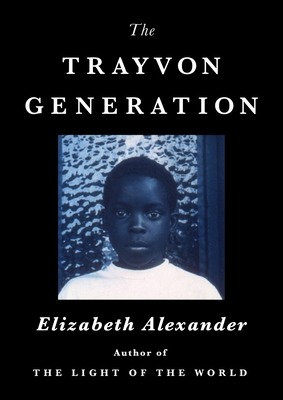
currently reading
#books#the trayvon generation#trayvon martin#elizabeth alexander#reading#book cover#black literature
1 note
·
View note
Text
Spider-Man: Across the Spider-Verse: I may have activated my own trap card
Spoilers for a movie that's two months old and also out on home release.
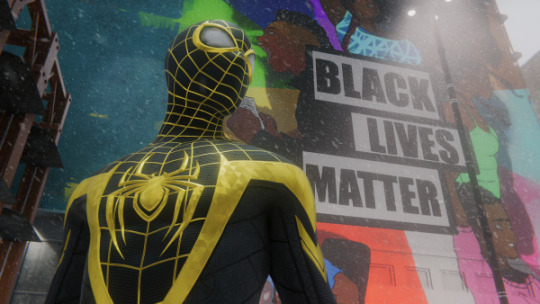
So, Miles, Gwen, Pavitr (Spider-India), and Hobie (Spider-Punk) all seem to have modern left-wing politics, though Gwen's got edited out. Hobie's introduction specifically says he hates "fascists", which carries over from the original comics.
By the time Hobie came around, I assumed he was just another poser, cooler than the hero rival character, expressing generic leftie politics, and his punk ethos wasn't sincere.
Which is exactly what the writers wanted me to think.
Not only is Hobie perfectly sincere about being anti-authoritarian, but he's been helping Miles since before they even met. He's been blatantly stealing junk from the Spider Society to build his own universe-jumping watch, and disguising it as petty vandalism.
He even tries to talk Miles out of trying to join the Spider-Society before the reveal that Miles himself is an anomaly, and the SS (geddit?) tries to detain Miles.
When Hobie says he's against authoritarianism, he really means it.
Speaking of the left-wing politics, Miles has a "#BLM" pin on his bag. It's very visible while he sits next to his dad.
Who's a cop.
(TANGENT: A few years ago, someone drew a stupid, very bad comic where Spider-Man (Peter Parker) was a) black, b) hated cops, and c) assaulted and subdued riot cops when they asked him for help.
That the comic didn't even show the riot cops were wrong. We were just supposed to assume they deserve to be left to the mercy of an angry mob.

Also, in this comic, Uncle Ben was killed by a cop, not a random thug who Spidey could've stopped but chose not to. Which makes me wonder how that would shake out.
It's kind of weird for someone to look at a character who's about personal responsibility to an unhealthy degree, and use him to express their collectivist anti-cop terrorism fantasies. That, or they didn't think through their fantasies.)
During Spider-India's opening, Miles says "I love Chai Tea!" And Pavitr goes on a rant about how "Chai" means "tea". Later on, The Spot says he's been on a "journey of self-discovery", and Pavitr basically says he's racist.
Which is a tad ironic, because Spot is literally white. And also because Pavitr is the one making the racist assumptions.
And I personally go to a church - in England - that has a lot of non-white non-British people. Mostly Africans. And me, of course. I wonder if any Asians ever went on a journey of self discovery to South London.
And I don't just mean as a cab driver.
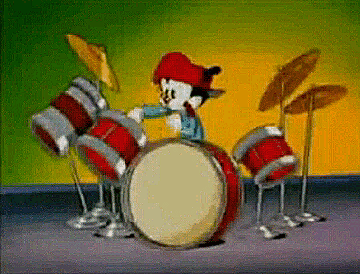
"Wait, SYABM, didn't you move to the UK for self-discovery?"
W-well, yes, partially.
Aside: I made the mistake of watching a Youtube video with the Chai Tea joke, and then I looked at the comments.
One guy said "tfw when Twitter users write a movie". An idiot (with much more upvotes) said "bro out here wanting blatant racism in movies".
...When the whole point of the joke is that the racism is not blatant.
It's only "blatant" if you're insufferably Twitterized. There are loads of redundant phrasings in English, like "ATM machine", and words often shift when they're adopted from other languages.
Also, "I dislike this joke" is not the same as "I want racism in this movie", when the "racism" in the movie is only there so it could be mocked.
One of the issues with putting real world movements in worlds that are drastically different - it's one of the main selling points of the franchise - is that it may seem odd that those movements exist in very similar form to the IRL version.
For example, Miles supports BLM in both his video game, and this. Which makes me think "did Trayvon Martin get shot in Florida? How about Mike Brown? Wouldn't the existence of supervillains throw things into a new perspective?"
Did I mention the giant George Floyd-style "REST IN POWER" mural to Miles' dead uncle? I cringed at that in the Wakanda Forever trailer, and I rolled my eyes at it here.
Floyd wasn't a saintly martyr, he was an unlucky violent thug.
Also, Aaron was a supervillain killed by another bad guy who nearly destroyed the city, not a cop.
Also, this is at a party to celebrate how Miles' dad is about to be promoted. Assuming Floyd died and the 2020 protests/riots also happened in Miles' universe, then it seems a tad tasteless to have a mural inspired by an anti-cop movement overlooking it, even if the party is not full of cops.

Spider-India lives in "Mumbattan".
The people who settled the Manhattan area were originally Indian. But the other type of Indian. The Indians we're not supposed to call Indians anymore.
The name "Manhattan" is even Native American.
The first permanent settlement was Dutch. Then the English got it. I guess the English could've shipped Indians to the other side of the world and eventually ceded the area to them, or maybe in this world India was a world-conquering superpower and Mumbattan is the result of...importing Native Americans?
Which would make Pavitr's complaint that "the British stole all of our stuff and put it in their museums" seem a tad hypocritical.
Of course, since I wrote all that, someone reminded me that Pavitr explicitly says the joint is in India.
"SYABM," you say, "you're overthinking this."
Yes, I am. Because the filmmakers didn't think it through. If you want to use ha-ha-funny to make a serious point, you invite examination of that point.
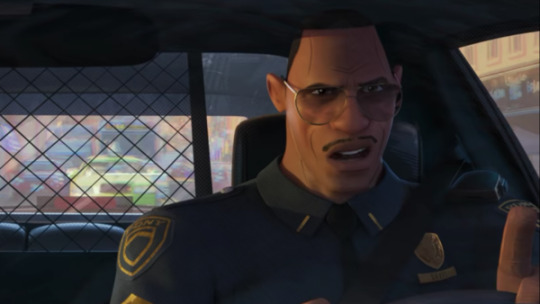
Miles (as Spidey) now works with his dad, though he disguises his voice. At one point, Miles tells his father that men bottle up mental health issues.
This is true (and ironic, considering Miles is hiding who he is from Jeff), but it's not the first time I've seen some progressive work try to address men's issues in an very awkward way. At least here, it's played for comedy.
Also, seems a tad hypocritical coming from a guy who wears a "#BLM" pin in the presence of his cop father.
Also, if you work the timeline, that would mean Miles was about 7 or 6 when BLM started. Which means he's gone most of his life knowing nothing else.

There was a controversy over a "protect trans kids" trans flag in Gwen's room, which was apparently edited out.
IMO, it seems a tad strange for a girl who feels estranged from everyone in her world to join a social movement, but what do I know? Maybe it was there before then.
Some people came to the extremely logical conclusion that Gwen herself is trans. Even though she's distinctly physically feminine and possibly too young for puberty blockers depending on Earth 65′s laws.
Like the "oh great, it's Liv" shippers, people are reaching really hard to see what they want to see.
Some people have said that Gwen's issues with her dad and herself seem awfully similar to the issues LGBTQIA2S+ kids go through.
Gee, it's not like, y'know, feeling estranged from one's family is a common theme in fiction about teenagers and superhero, and the whole "superpowers = minority" thing has been done to death for most of the past century.
Perhaps most notably - and clumsily - in X-Men.
youtube
I'm not saying this wasn't the intended subtext. I'm saying if it was, it would just be really, really cliche.

There's this recurring theme of people telling miles "how [his] story is supposed to go".
When he's at a meeting with his parents and his guidance counselor, the lady says his story of being a black-Latino son of an immigrant would sound great in the college application letters. His mom is a tad miffed, given that they're a) solidly middle class, and b) as a Puerto Rican, she considers herself American.
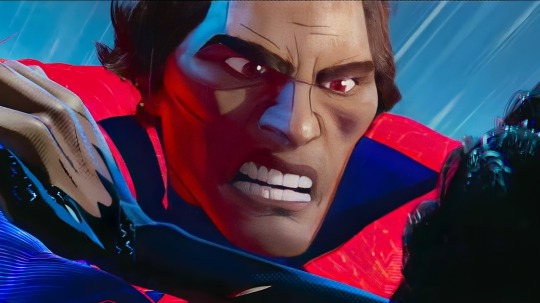
Miguel (Spider-Man 2099) doesn't want Miles in the multiversal council of Spiders, because Miles was bitten by the radioactive spider from a different universe. Which is why his local Spider-Man died, and the spider's home dimension has no Spider-Man.
Also, Miguel is fixated on "canon events". The idea that there are certain things, especially tragedies, that have to happen to Spiders, or their entire universe falls apart.
And he knows this, because he tried to take over for a version of him that got shot dead by a thug. Tried to raise his daughter.
And he watched as the universe collapsed in front of him.
So he's projecting his own guilt onto Miles, a tad.
According to TVtropes and other sources, this was actually about the people who didn't accept Miles as a replacement Spidey, possibly out of racism.
Yeah, that's real hard-hitting topical meta-commentary about a character who debuted 12 years ago. 8 years when the first movie came out.
I'd also like to point out that despite stereotypes of comic book fans, certain minority successors to banner superheros have been fairly well-received. Like Jaime Reyes, or Cassandra Cain.
(Note: I wrote that before the Blue Beetle movie came out. And flopped.)
And, of course, loads of people like Miles specifically because he's a minority Spidey, which is also racist, just from the other direction. In fact, a lot of his fans seem to forget the "Latino" part of "Afro-Latino". From what little I've seen of Miles early comics, they did actually put strong emphasis on his race.
I also suspect the filmmakers may be misinterpreting the usual successor knee-jerk reactions
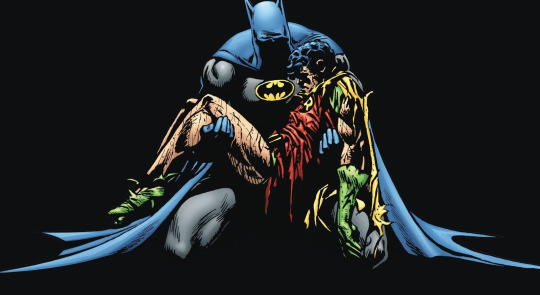
as racism. If you're using an established brand name for your new hero, you're creating some expectations.
Also, you know the most popular meme about regular Spidey that I see? That Marvel's writers just keep making him suffer and don't want him to actually develop. Which would kinda make Marvel closer to Team Miguel than Team Miles.

Miles also gripes that Miguel is letting "some algorithm" tell him what to do. While I agree with the sentiment, I'd like to point out that, again, Miles supports BLM.
A movement popularized by an algorithm.
A movement made up of narratives and assumptions.
A movement which has never proven a single incident was because of racism.
During the big chase scene, we see a Spider girl in a wheelchair, aka Sun-Spider. She's from the comics. Same initiative that gave us "Web-Weaver".
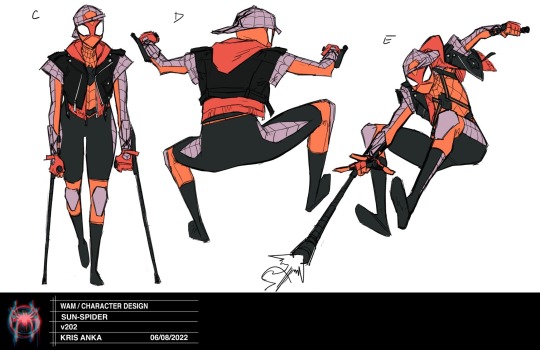
Who is, of course, an extremely effete gay fashion designer Spidey. I kinda like his outfit, though the Spider-eyes with eyelashes is a little too far.
And Sun-Spider seems exactly like a character a stereotypical 90s executive and focus group would come up with. Down to the backward baseball cap.
(Turns out she's Dayn Broder's actual Spider-Sona.)
Also, while I was looking up that one black and white Spider who said "nowhere to run" (Metro-Spider, played by record producer Metro Boomin [/sic]), I found out that Aunt May's full name is "Maybelle", not just "May". TIL.
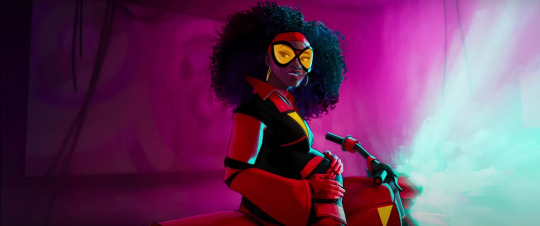
There's a bit of a double standard with this version of Spider-Woman, who's black and pregnant.
-People in the movie - including Peter B - regularly point out how Peter B endangering his infant daughter Mayday by taking her along with him. But for some reason, nobody says a word about Jessica, who's an active-duty stunt-biking superhero.
Even regular motorbiking can be dangerous for pregnant women.
In fact, the movie portrays this as heroic and impressive. When Gwen sees Jess is preggos, she asks if Jess can adopt her.
Not to mention the whole "afro and hoop earrings" thing, which seem like a bad idea for a type of hero who often gets into melee combat, even with Spider-Sense.
Yes, I'm aware that female heroes, including the Spider-Ladies, often have exposed hair. It's a genre convention. Incidentally, it was nice to see Batwoman wore a detachable decoy wig in the comics. Some bad guy tries to grab it in a fight? It comes right off.
Also, Jess doesn't have much actual character.
Being pregnant is not a character trait. In fact, her only real traits are basically "cool but stern sassy mentor", to contrast with Peter B.
-Incidentally, someone on TVtropes pointed out the double standard. And when I saw the page again, a page-camper had deleted it, with no explanation.
Guess they couldn't stand someone pointing out the flaws of their waifu.
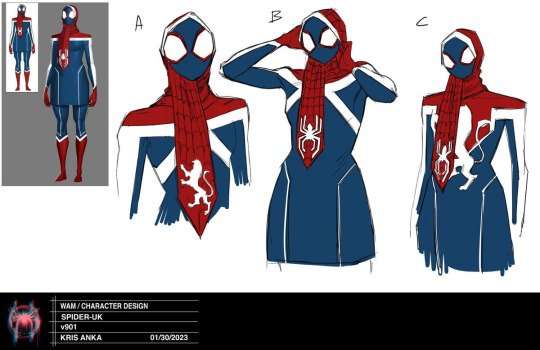
(One) Spider-UK in this movie is Muslim. I know she's Muslim because she wears a Spider-themed headdress. Note that regular Marvel 616 has a muslim lady Spider-UK, but her name is Zarina Zahari and she doesn't wear a hijabi.
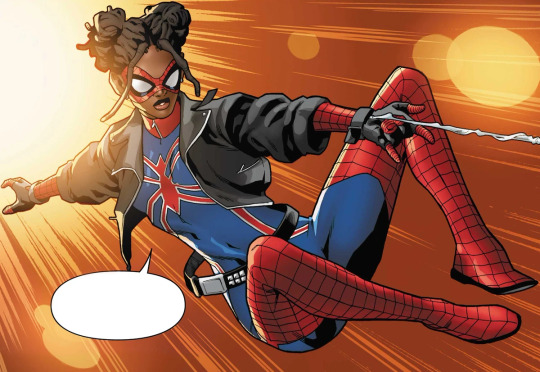
(Also, she could be mistaken for Ms. Marvel.)
ms marvel.jpg
You might be thinking "wait, isn't a headdress impractical in a melee fight? Doesn't it give your enemy something to grab?" Yes, it is.
But so are Jess's earrings, afro, and being pregnant, so clearly there's a lot of artistic license going on.
Maybe it's partially tearaway, like Batman's cape.
I gotta wonder about the religious rules of wearing a head covering over a mask that *already* covers your entire head. Did she go see her imam and go "Okay, I have a really weird question..."
Come to think, Spidey is usually slim, but a lot of lady Spideys in this movie seemed to have wide hips. Including muscular ladies. Kris Anka's concept art goes really hard on wide hips. I don't know why. Stronger, faster character reads during the big chase?
I guess Spiders could be expected to have strong legs.
BOTTOM LINE:
I liked the movie overall, though the progressive bits made me roll my eyes a little. I...want to see the third one, with reservations.
77 notes
·
View notes
Note
A black man was also helping subdue Jordan Kneely. He viewed him as a threat to other people as well.
First of all, his name was Jordan Neely, not Kneely.
And the cowardly murderer who snuck up behind Jordan Neely and strangled him for 15 minutes is Daniel Penny.
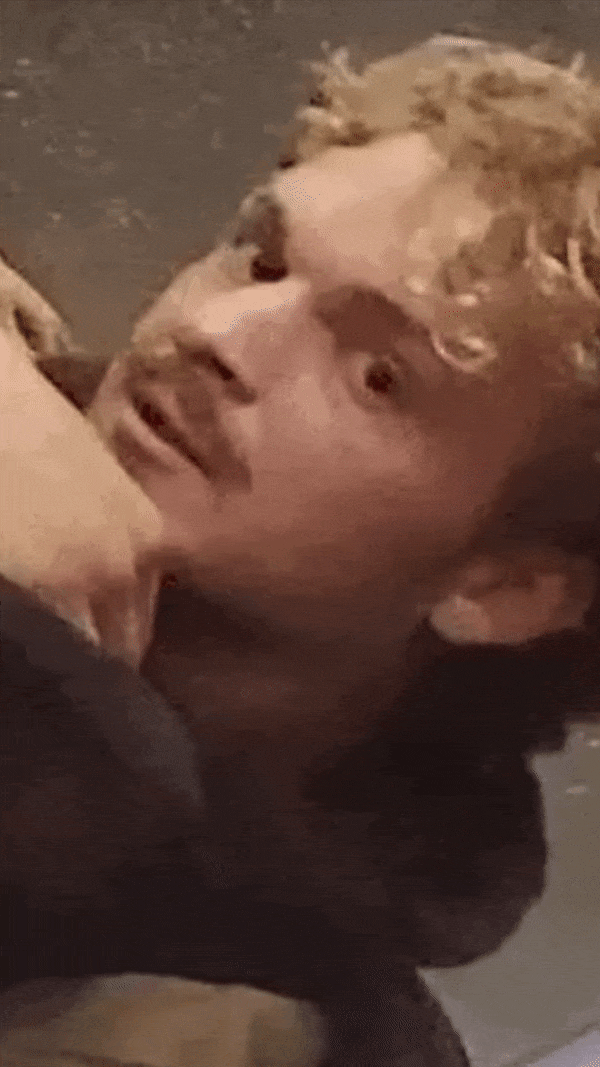
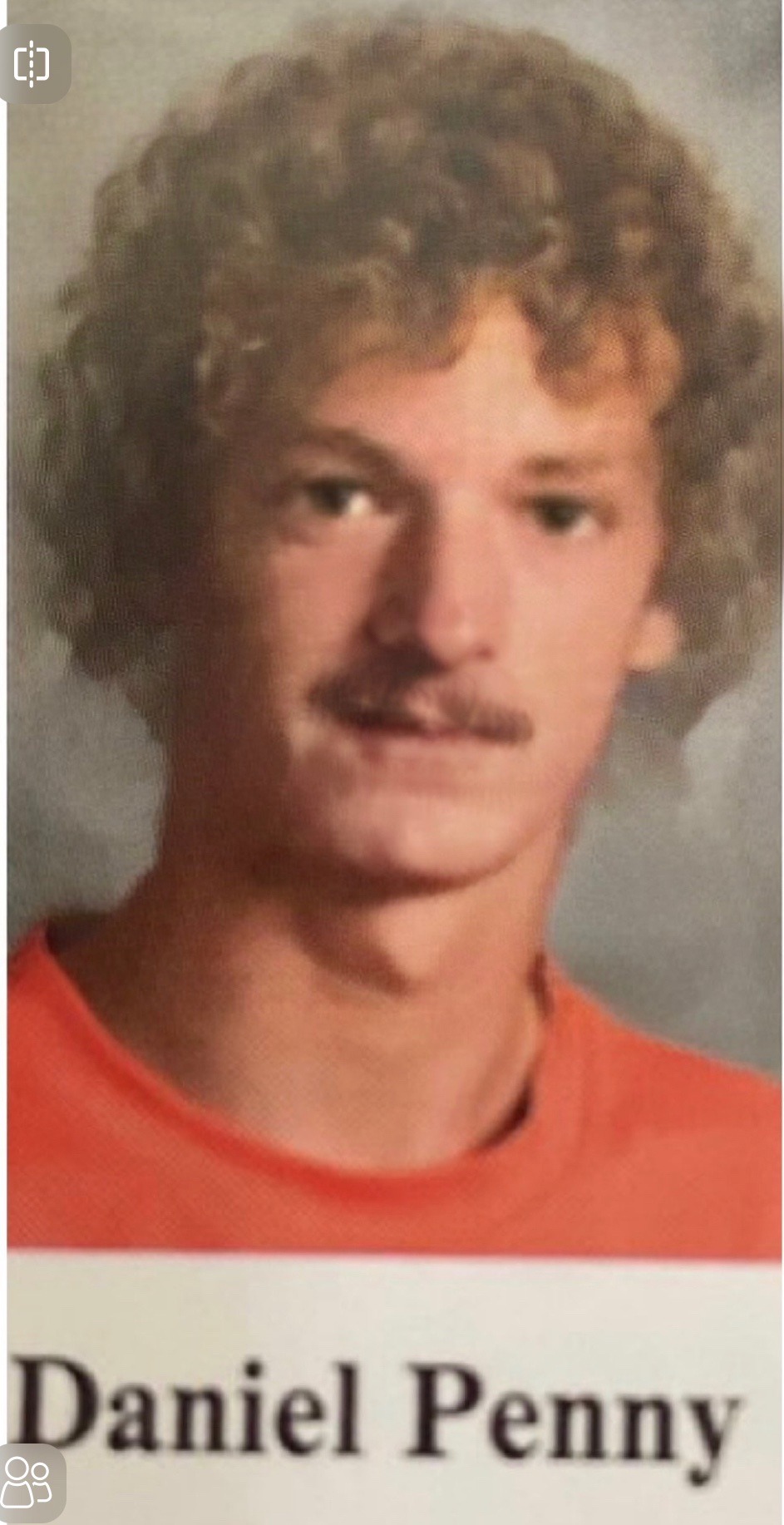
Second, whenever a white person murders a Black person—from George Floyd to Tamir Rice to Trayvon Martin to Breonna Taylor—you can depend on white people trying to derail their murder by either invoking Black-on-Black crime, or victim blaming, or character assassination, or engage in endless equivocating about why the murder was maybe possibly somehow justified because of unspoken (but very well known!) racial stereotypes. This ask is an example of the last thing.
Look, anon, your “gotcha” isn’t nearly the argument you seem to think it is.
What is key in Jordan Neely’s murder is the race of the victim.
There are any number of studies that have repeatedly shown that when a murder victim is Black or non-white, the police, the general public and the so-called criminal justice system are less than concerned about meting out justice to the killer. If, however, the victim is white, then everything changes and justice suddenly becomes much much more important. For example: the state of Florida has had the death penalty forever, but it wasn’t until 2017 that Florida gave the death penalty to a white man for killing a Black man—2017, for the very first time.
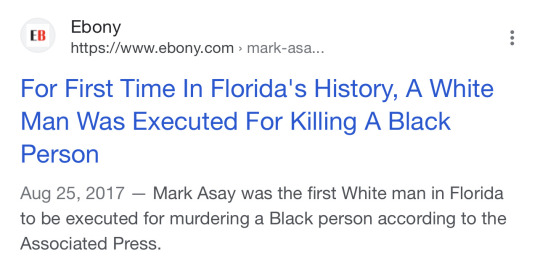
Why do you think that is, anon?
I’ll give you a hint: it isn’t because that was the very first time a white man murdered a Black man in Florida.

It’s because it’s the race of the VICTIM that matters here in America.
Also, please understand something else here…
There are LGBTQ people who vote for openly homophobic Republicans.
There are Black people who vote for racist Republican candidates.
There are Black police officers who harass and murder unarmed and innocent Black people.
There are women who have had or plan on having an abortion who vote for anti abortion candidates.
There are immigrants and former refugees who who will vote for the same racist conservative candidates who vote against asylum seekers and any immigration reforms.
Absolutely NONE of this is a valid excuse for racism, misogyny, homophobia or xenophobia.
What’s important to remember here are the wisdom of Martin Luther King, Jr’s words:
“Every minority and every people has its share of opportunists, profiteers, freeloaders and escapists. The hammer blows of discrimination, poverty and segregation must warp and corrupt some. No one can pretend that because a people may be oppressed, every individual member is virtuous and worthy. The real issue is whether in the great mass the dominant characteristics are decency, honor and courage.”
And lastly, but most importantly: SOMEONE YELLING AND HAVING A BREAKDOWN IN PUBLIC IS NOT “THREATENING” AND DOES NOT JUSTIFY MURDER. MAKING PEOPLE UNCOMFORTABLE IS NOT “THREATENING” AND DOES NOT JUSTIFY MURDER.
So in closing, 🖕🏿
#anon#ask#answered#jordan neely#daniel penny#racism deniers#white privilege#two americas#double standards#racism
105 notes
·
View notes
Text
BANNED FCS ⸻ updated, 11/20/23
disclaimer: this list should not be taken as a matter of my own opinion. each individual listed has a source attached for your own education and should be carefully considered in all of your fc choices. if you feel as if any individual has been mistakenly listed here, please feel free to reach out to me privately to discuss the circumstances surrounding their placement. ultimately, i did not create this list as a means of causing negatively, but it is much more important that we hold each other accountable and i hope to provide a running list of fcs that would be inappropriate or otherwise problematic for usage.

BANNED FOR: ABUSE
BANNED FOR: SEXUAL MISCONDUCT
Kim Ji-soo (actor), bullying & alleged sexual misconduct (source)
Jung Joon-young, Burning Sun scandal (source)
Choi Jong-hoon, Burning Sun scandal (source)
Lee Seung-hyun (Seungri), Burning Sun scandal (source)
Lee Jong-hyun (CNBLUE), Burning Sun scandal (source)
Kim Hyung-jun, alleged sexual misconduct (source)
BANNED FOR: APPROPRIATION/RACISM
Wendy Son, perpetuating racial stereotypes (source)
Kwon Ji-yong, blackface to imitate Trayvon Martin (source)
Shin Dong-hee (Shindong), blackface to imitate Oprah (source)
Kim Kang-hoon (Yesung), blackface to imitate Nick Fury (source)
Lee Gi-kwang, blackface/perpetuating racial stereotypes (source)
Kim Jong-dae, blackface to imitate a racial caricature (source)
Yoon Bo-mi, blackface to imitate a racial caricature (source)
Jackson Wang, appropriation & ignorance of black protective hairstyles (source)
BANNED FOR: EXPRESSED DISCRIMINATION
Henry Lau, homophobia & transphobia (source)
Park Jeong-soo (Leeteuk), fatphobia (source)
Shin Dong-hee (Shindong), fatphobia (source)
Choi Si-won, homophobia & transphobia (source & source)
Kim Kang-hoon (Yesung), fatphobia (source)
Amber Liu, instances of expressed racial prejudice in response to police brutality (source)
Jessica Ho, allegations of assault (charges dropped), homophobia, usage of slurs (source & source)
BANNED FOR: GROSS/QUESTIONABLE BEHAVIOR
Kim So-won, "misunderstood" the significance of Nazi symbolism (source)
Wong Kun Hang, weird comments about dreadlocks (source)
Yong Jun-hyung, Burning Sun involvement (never prosecuted)
Roy Kim, Burning Sun involement (never prosecuted)
Eddy Kim, Burning Sun involvement (never prosecuted)
Kim Young-woon (Kangin), present in voyeurism chatroom (source)
Jeong Jin-woon, present in voyeurism chatoom (source)
Lee Chul-woo, present in voyeurism chatroom (source)
Son Chae-young, "misunderstood" the significance of Nazi symbolism & right-wing conspiracy group QAnon (source & source)
BANNED FOR: SUPPORT OF OPPRESSION/GENOCIDE
Liu Yifei, support of police brutality during Hong Kong protests (source)
Donnie Yen, support of Chinese Communist Party (source)
Fan Bingbing, support of Chinese Communist Party (source)
Jackson Wang, support of Chinese Communist Party & its use of forced labor in Xinjiang (source)
BANNED FOR: EXPRESSED DISCOMFORT WITH USAGE
Christian Yu
Park Sun-young (Luna)
Lee Ji-eun (IU)
BANNED FOR: MISC.
Kim Jong-hyun, passed away
Tany (Kim Jin-soo), passed away
Ahn So-jin, passed away
Go Eun-bi (EunB), passed away
Kwon Ri-se, passed away
Kim Dong-yoon, passed away
Seo Min-woo, passed away
Goo Ha-ra, passed away
Choi Jin-ri (Sulli), passed away
Moon Bin, passed away
Lee Ji-han, passed away
Im Na-hee, passed away
Park Soo-ryun, passed away
Jeong Joong-ji, passed away
Yoo Joo-eun, passed away
USE WITH CAUTION.
Jennie Kim, taking part in "The Idol"
Kim Min-gyu, general carelessness for perceived support of korean conservative party amid prior (unresolved) allegations of bullying, sexual misconduct, and misogyny (source & source)
Kim Tae-hyung, ignorance surrounding the cultural relationship between black hair & durags (source)
Lee Jeno, fatphobic comments (source)
Park Jisung, colorist & fatphobic comments (source)
Park Chanyeol, colorist comments (source)
#some of these like fan bingbing are#kind of nuanced and complicated#but if you have questions about any of these#please reach out to me
24 notes
·
View notes
Text



Devan Shimoyama was born in 1989 in Philadelphia, Pennsylvania and graduated from Penn State University in 2011 with a BFA in Drawing/Painting. He received his MFA from Yale University School of Art in Painting/Printmaking in 2014. While there, in 2013, he was awarded the Al Held Fellowship.
"Shimoyama creates two distinct worlds—one an enchanted paradise, the other a queer imagining of the African American barbershop. Celebrated for fraternity and community, Shimoyama presents the barbershop as a space where young men and boys can feel shamed and vulnerable. In sculpture, he creates objects of mourning for Trayvon Martin and Tamir Rice, both examples of the aggressive targeting of African American youth as fearful or threatening. While canvases feel joyful and celebratory, they also present commentary on pain and sorrow. Teardrops lurk in the background of his landscapes or stream down the faces of his figures as a reminder of the racial injustices at work in contemporary society. Shimoyama presents a world where race, sexuality, and identity can operate from a point of freedom generated by inner strength." The Andy Warhol Museum.
ww.debuckgallery.com/artist/devan-shimoyama
14 notes
·
View notes
Text
I am immune to vote blue no matter who propaganda i have like at least 8 intersecting marginalized identities and was introduced to how fucked up this country is through Trayvon Martin who is - was - the same age as me. I do not think evil people should win but I Have seen it's the ONLY time you actually see real, widespread solidarity and social progress in resistance to said evil people in power.
All of that immediately evaporates and everyone's left to fend for themselves again when Democrats get elected; I think white ppl in general should have a reason to be fearful again to gain a sense of solidarity that actually persists beyond election cycles. If that solidarity never takes root there's no hope for this country.
You have to love other people more than you want to win - meaning that if you're only fighting for or helping someone because you lost and not because you genuinely care about them, you're going to stop as soon as you win (i.e all the back to brunch liberals).
Then have the fucking gall to tell people you've shown absolute disregard towards (or even contempt for daring to have critiques or publicly articulating dissatisfaction with what dems actually (don't) DO with their power) to fall in line Every Single Election. The country's perceived safety is really only your safety, when you lose that safety it's really just like hey welcome to the circumstances Everyone else has to live with, are you going to help change that? Because we need help; electoral politics and voting for liberals are not going to save us.
#sorry just needed to get that off my chest#biden dick riders annoy me so much lol#but also just some thoughts on growing up coming to terms w how evil our institutions are then living thru a trump presidency and now this#╮(. ❛ ᴗ ❛.)╭ communities will always have ur back so to a point i do feel like we'll be ok no matter what bc we have Each Other#but there is a very very large portion of the country that consist of very self centered yt ppl or yt-centric communities that don't show#enough solidarity w others. u have to care about black ppl you have to care about disabled ppl you have to care about trans ppl#you have to love others more than you want to win. you have to show up for ppl u want to show up for u. you gotta do more than only vote.
10 notes
·
View notes
Text
it is really just amazing to go back and look at lib-y stuff from the mid 2010s and see the dramatic differences in political tone between pre-BLM and post-BLM.. stuff. suddenly even the Centrist white dudes were drawing lines in the sand. i remember watching the episode of the daily show that came out after michael brown was murdered (i think it was him? maybe trayvon martin idk its all such a blur to me im sorry) where jon stewart puts on his serious voice he would typically only reserve for 9/11 or whatever and be like “look yall might not wanna hear this but the experiences of white americans are fundamentally different than those of black americans” and then like a few months later he was gone off tv. right? i think that timeline makes sense. and crash course has a similar thing going on. old series didnt really touch on race relations in the us even us history which… looking back is awkward to say the least but i suppose if ur pandering to the apush crowd its probably sensible since the ap test is never gonna have like an essay question about how america is built on racism and subjugation of black ppl and ppl of color in general. or idk maybe it does now. but it certainly didnt in 2013. but then literature has so much content about black authors and authors of color and actually has like deeper than surface level exploration of how those authors experiences of racism and colonialism informed their writing. idk its just nice to see that at least on some maybe superficial level but some level still the centrist white dudes actually stopped being spineless.
4 notes
·
View notes
Text
https://www.instagram.com/p/CsRnIVDPLQs/
shaunking 🤬🤬🤬What I’m seeing right now with over $2 million given to support Daniel Penny after he choked Jordan Neely to death IS NOT NEW. The public celebration of Penny isn’t new either.
It’s BEEN happening.
Gathering to celebrate the brutal lynching of a Black boys, girls, men, women, and even entire families is a white American pastime. It happens every generation.
It’s one of the single most evil realities about this place.
I decided to crop out the dangling dead bodies from this image.
I almost posted a slew of them, but it’s just too much. It was always too much.
In the not so distant past they lynched Black folk and made it such a communal event that THOUSANDS gathered together, smiling, posing, even taking body parts as souvenirs.
That they’ve made Daniel Penny a hero, and have rallied behind him, isn’t a hidden message. Not at all.
It’s them openly celebrating not just the man, but what he did, to a tiny Black man with a tragic history of severe mental health challenges.
I have to say it, but Jordan Neely DID NOT TOUCH A SOUL.
He never put his hands on ANYONE before this man killed him.
In the extended video people are telling him that he’s killing Jordan but he still refused to let go.
Thousands of Marines have said EVERY Marine is taught against this in their martial arts training.
Anybody that knows how to apply the rear naked choke knows that holding it this long will kill someone.
But white folk have made this man their hero anyway.
Why? Because THEY LIKE IT.
They like what he did.
I saw them celebrating the murder of Trayvon Martin and literally buying autographs from his killer.
Who the hell does this?
The same people that proudly posed with dead Black bodies generations ago.
This is their kink
When a black man, woman and child is killed or tormented it makes them feel horny
to them a black suffering is a sexual turn on
This is not making me horny it’s making me angry
this doesn’t turn me on it’s pissing me off
to hell with traumatic porn !
#jordan neely#daniel penny#blacklivesmatter#journalism fail#media bias#black lives matter#reblogview post#blm#homelessness#sigh#true crime#these pos motherfuckers refuse to see the compassion of black folks who are mentally ill and homeless#if you don't see the compassion of them you can happily go die in a fire#seriously kill yourself rn#you disgusting#selfish#disgusting fuck#if you agreed with this shit#you can die in a fire#i'll even light you the fuck up#on god#And I’m so serious
6 notes
·
View notes
Text
THE BOOKS I READ IN 2022, in the order in which I read them (*books I read before, that I was reading again):
Alexandra Chang, Days of Distraction
Elizabeth Miki Brina, Speak, Okinawa
Cynthia Dewi Oka, Fire Is Not a Country
Hanif Abdurraqib, Go Ahead in the Rain: Notes to A Tribe Called Quest
*Cathy Park Hong, Minor Feelings
Victoria Chang, Dear Memory
*Etel Adnan, Of Cities & Women (Letters to Fawwaz)
Sun Yung Shin, The Wet Hex
traci kato-kiriyama, Navigating With(out) Instruments
Raquel Gutiérrez, Brown Neon
Solmaz Sharif, Customs
*Etel Adnan, Journey to Mount Tamalpais
Lucille Clifton, Generations: A Memoir
Emerson Whitney, Heaven
Kim Thúy, em, tr. Sheila Fischman
Angel Dominguez, Desgraciado (the collected letters)
Janice Lee, Separation Anxiety
*Theresa Hak Kyung Cha, Dictee
*Cathy Park Hong, Translating Mo’um
Kyoko Hayashi, From Trinity to Trinity, tr. Eiko Otake
Lao Yang, Pee Poems, tr. Joshua Edwards & Lynn Xu
Yuri Herrera, A Silent Fury: The El Bordo Mine Fire, tr. Lisa Dillman (
Mai Der Vang, Yellow Rain
Chuang Hua, Crossings
José Watanabe, Natural History, tr. Michelle Har Kim
Walter Lew, Excerpts from: ∆IKTH 딕테/딕티 DIKTE, for DICTEE (1982)
*Bhanu Kapil, The Vertical Interrogation of Strangers
Vasily Grossman, An Armenian Sketchbook, tr. Robert & Elizabeth Chandler
Hiromi Kawakami, Parade, tr. Allison Markin Powell
Lynn Xu, And Those Ashen Heaps That Cantilevered Vase of Moonlight
*Etel Adnan, Sitt Marie Rose, tr. Georgina Kleege
Jennifer Soong, Suede Mantis/Soft Rage
*James Baldwin, No Name in the Street
*Hilton Als, The Women
Dot Devota, >She
V.S. Naipaul, The Return of Eva Perón
Yasushi Inoue, The Hunting Gun, tr. Sadamichi Yokoo and Sanford Goldstein
Molly Murakami, Tide goes out
Adrian Tomine, Shortcomings
Hisham Matar, A Month in Siena
Leia Penina Wilson, Call the Necromancer
Gabriel García Márquez, News of a Kidnapping, tr. Edith Grossman
Amitava Kumar, Bombay-London-New York
Elizabeth Alexander, The Trayvon Generation
Ryan Nakano, I Am Minor
Constance Debré, Love Me Tender, tr. Holly James
Hilton Als, My Pin-up
Victoria Chang, The Trees Witness Everything
Leslie Kitashima-Gray, The Pink Dress: A Story from the Japanese American Internment
Emmanuel Carrère, Yoga, tr. John Lambert
Ronald Tanaka, The Shino Suite: Sansei Poetry
Patricia Y. Ikeda, House of Wood, House of Salt
Soichi Furuta, to breathe
Kiki Petrosino, Bright
Sueyeun Juliette Lee, Aerial Concave Without Cloud
Nanao Sakaki, Real Play
Esmé Weijun Wang, The Collected Schizophrenias
Francis Naohiko Oka, Poems
Geraldine Kudaka, Numerous Avalanches at the Point of Intersection
Steve Fujimura, Sad Asian Music
Augusto Higa Oshiro, The Enlightenment of Katzuo Nakamatsu, tr. Jennifer Shyue
Julie Otsuka, The Swimmers
Salman Rushdie, The Jaguar Smile: A Nicaraguan Journey
Margo Jefferson, Constructing a Nervous System
Hua Hsu, Stay True
Barbara Browning, The Miniaturists
Kate Zambreno, Drifts
*Julie Otsuka, When The Emperor Was Divine
Louise Akers, Elizabeth/The Story of Drone
Wong May, In the Same Light: 200 Poems for Our Century from the Migrants & Exiles of the Tang Dynasty
Gabrielle Octavia Rucker, Dereliction
Trung Le Nguyen, The Magic Fish
Jessica Au, Cold Enough for Snow
Tongo Eisen-Martin, Blood on the Fog
Lucas de Lima, Tropical Sacrifice
*Like a New Sun: New Indigenous Mexican Poetry, ed. Víctor Terán & David Shook
Billy-Ray Belcourt, A Minor Chorus
Kazim Ali, Silver Road
*Sadako Kurihara, When We Say Hiroshima, tr. Richard Minear
Simone White, or, on being the other woman
*James Baldwin, The Devil Finds Work
Christina Sharpe, Ordinary Notes
*Raquel Gutiérrez, Brown Neon
Marguerite Duras, The Man Sitting in the Corridor
Gayl Jones, Corregidora
*Bhanu Kapil, The Vertical Interrogation of Strangers
*Etel Adnan, Seasons
Gwendolyn Brooks, to disembark
Cristina Rivera Garza, The Taiga Syndrome, tr. Suzanne Jill Levine and Aviva Kana
Gwendolyn Brooks, In the Mecca
Nona Fernández, The Twilight Zone, tr. Natasha Wimmer
Selva Almada, Dead Girls, tr. Annie McDermott
*Theresa Hak Kyung Cha, Dictee
Valerie Hsiung, To Love an Artist
*Theresa Hak Cha, Exilée and Temps Morts
Dao Strom, We Were Meant To Be a Gentle People
Randa Jarrar, Love Is An Ex-Country
*Dao Strom, Instrument
Osamu Dazai, Early Light, tr. Ralph McCarthy and Donald Keene
Osamu Dazai, The Setting Sun, tr. Donald Keene
Rachel Aviv, Strangers To Ourselves: Unsettled Minds and the Stories That Make Us
Mahmoud Darwish, Journal of an Ordinary Grief, tr. Ibrahim Muhawi
16 notes
·
View notes
Text

No comment on American Beauty but I do not understand the dismissal of Fight Club in the context of proglib mythos. Haven't the great victories of social justice been in the reveal that the idyllic time of the 90s hid systems of racial and heteronormative supremacy? Weren't the 90s the time of Clinton referring to black teenagers as super-predators, Rudy Giuliani's tough-on-crime platform, various anti-loitering laws and broken window theory of policing? Weren't Trayvon Martin and George Floyd case studies in a system of white supremacy, which simply served as focal points for protest movements to articulate issues in the black communities? Wasn't the legalization of gay marriage, the proliferation of including pronouns in email signatures, and the popularization of transgenderism via its genesis on Tumblr and expanded to the general public via Caitlyn Jenner the most important victories evar? And society before this was a hellish wasteland for gay people?
In light of all this, isn't Fight Club dismissing comfortable whiteoids as being "fake" much closer to the mark than deluding yourself that the 90s were "better" than now, because you, disgusting whiteoid, had a better chance at being comfortable?
5 notes
·
View notes
Text
Thoughts on Revolution
I feel as a country and as someone who is Generation Z, there is a strong delusion surrounding the idea of revolution. People want revolution now. They are just waiting for the right person to tell them to stop everything they are doing and fight the oppressor. But that is the issue; they still like being told what to do. And because revolution is extremely inconvenient.
To genuinely want revolution is the same as being religious; you have to believe in it and then curate your life around that belief. Revolution is a state of mind. I believe the Revolution begins with my generation, Generation Z. This generation will mark the end of widespread patriotism in the States. And if my generation decides to have kids, their descendants will be even radicalized further, just like how the descendants of early millennials and late Gen X’ers are becoming radicalized now. This is why revolution is generational. Younger generations experience the consequences of the older generation’s lack of foresight. Younger generations are collecting their own observations of the events happening in the world. Nine year olds getting shot at school, innocent people being shot by the police, politicians banning books, towns being poisoned. The list goes on. My generation, Generation Z has been collecting these observations since Sandy Hook. Since Tamir Rice. Trayvon Martin. In the simplest words: We don’t fuck with the government, and we aren’t proud to be American.
The more and more people that feel hostility towards the government, the more and more our national identity becomes about resistance. And as our national identity becomes about resistance, the more resistance there will be. It’s just history. Our national identity will change with the times, but this national identity will be curated through generations. Just as its been curated by the generations before.
I believe revolution is inevitable but I unfortunately don’t think I’ll be apart of it. I think it’s going to take a while. I am however fortunately blessed to be existing in a time during the downfall of a great empire, the United States of America. All of the art and literature that will come from this time will be forever encoded within the history of our world. What a time to be alive. I hope it is when I am on my death bed that I get to witness the Revolution. I’d like to think the cynicism and anti-patriotism of my generation would have done some good. All I can do until then is just hold on and ride the wave of resistance.
5 notes
·
View notes
Text

Attorney Daryl D. Parks (born June 10, 1968) is an accomplished lawyer and businessman who received a BA from Florida Agricultural and Mechanical University and a JD from Florida State University.
He has represented the families of Trayvon Martin, Michael Brown, and Corey Jones. The reputation gained by him and his firm has led to his appearances as a legal expert on national television broadcasts such as MSNBC, Fox News, and CNN.
He received the Leadership Pacesetter Award from the Greater Tallahassee Chamber of Commerce, the Leon County Small Business of the Year award, the NAACP Chairman of the Board Award, the Florida Bar Henry Latimer Award, the Advocates Award from the Lawyers Committee for Civil Rights Law, and the Johnnie L. Cochran Soaring Eagle Award from the American Justice Association. He is a member of the Million Dollar Advocacy Forum.
He has served as Vice Chair of the FAMU Board of Trustees, and Chairman of the Board for both the FAMU Foundation and the FAMU Boosters. He is a lifetime member of the National Bar Association. In 2017 he was named the National General Counsel for Alpha Phi Alpha Fraternity.
He announced his intention to challenge Republican incumbent State Senator Corey Simon for Florida District 3 in November 2024. #africanhistory365 #africanexcellence #alphaphialpha
1 note
·
View note
Text
Events 2.26
747 BC – According to Ptolemy, the epoch (origin) of the Nabonassar Era began at noon on this date. Historians use this to establish the modern BC chronology for dating historic events.
364 – Valentinian I is proclaimed Roman emperor.
1266 – Battle of Benevento: An army led by Charles, Count of Anjou, defeats a combined German and Sicilian force led by Manfred, King of Sicily. Manfred is killed in the battle and Pope Clement IV invests Charles as king of Sicily and Naples.
1365 – The Ava Kingdom and the royal city of Ava (Inwa) founded by King Thado Minbya.
1606 – The Janszoon voyage of 1605–06 becomes the first European expedition to set foot on Australia, although it is mistaken as a part of New Guinea.
1616 – Galileo Galilei is formally banned by the Roman Catholic Church from teaching or defending the view that the earth orbits the sun.
1775 – The British East India Company factory on Balambangan Island is destroyed by Moro pirates.
1794 – The first Christiansborg Palace in Copenhagen burns down.
1815 – Napoleon Bonaparte escapes from exile on the island of Elba.
1870 – The Beach Pneumatic Transit in New York City, intending as a demonstration for a subway line opens.
1876 – Japan and Korea sign the Treaty of Kangwha, which grants Japanese citizens extraterritoriality rights in Korea, opens three Korean ports to Japanese trade, and ends Korea's status as a tributary state of Qing dynasty China.
1909 – Kinemacolor, the first successful color motion picture process, is first shown to the general public at the Palace Theatre in London.
1914 – HMHS Britannic, sister to the RMS Titanic, is launched at Harland and Wolff shipyard in Belfast.
1919 – President Woodrow Wilson signs an act of Congress establishing the Grand Canyon National Park.
1929 – President Calvin Coolidge signs legislation establishing the 96,000 acres (390 km2) Grand Teton National Park in Wyoming.
1935 – Adolf Hitler orders the Luftwaffe to be re-formed, violating the provisions of the Treaty of Versailles.
1935 – Robert Watson-Watt carries out a demonstration near Daventry which leads directly to the development of radar in the United Kingdom.
1936 – In the February 26 Incident, young nationalist Japanese military officers assassinate multiple cabinet statesmen and start a rebellion in downtown Tokyo, which is ended 3 days later.
1945 – World War II: US troops reclaim the Philippine island of Corregidor from the Japanese.
1952 – Vincent Massey is sworn in as the first Canadian-born Governor General of Canada.
1960 – A New York-bound Alitalia airliner crashes into a cemetery in Shannon, Ireland, shortly after takeoff, killing 34 of the 52 persons on board.
1966 – Apollo program: Launch of AS-201, the first flight of the Saturn IB rocket.
1971 – U.N. Secretary-General U Thant signs United Nations proclamation of the vernal equinox as Earth Day.
1979 – The Superliner railcar enters revenue service with Amtrak.
1980 – Egypt and Israel establish full diplomatic relations.
1987 – Iran–Contra affair: The Tower Commission rebukes President Ronald Reagan for not controlling his national security staff.
1992 – First Nagorno-Karabakh War: Khojaly Massacre: Armenian armed forces open fire on Azeri civilians at a military post outside the town of Khojaly leaving hundreds dead.
1993 – World Trade Center bombing: In New York City, a truck bomb parked below the North Tower of the World Trade Center explodes, killing six and injuring over a thousand people.
1995 – The UK's oldest investment banking institute, Barings Bank, collapses after a rogue securities broker Nick Leeson loses $1.4 billion by speculating on the Singapore International Monetary Exchange using futures contracts.
2008 – The New York Philharmonic performs in Pyongyang, North Korea; this is the first event of its kind to take place in North Korea.
2012 – Seventeen-year-old African-American student Trayvon Martin is shot to death by neighborhood watch coordinator George Zimmerman in an altercation in Sanford, Florida.
1 note
·
View note
Text
For Black People: Activist Hour Hosted By Tahyira Savanna
As we enter Negro Week this week, we wanted to highlight some of the current generation of Black activism. Tahyira Savanna has been vocal about Criminal Justice reform since 2013 after she used her Facebook feed to share information regarding the Trayvon Martin murder case. Stand Your Ground was the law that allowed for then neighborhood watchmen, George Zimmerman, to get away with the murder of…

View On WordPress
0 notes
Text
BLM (Website)

The Black Lives Matter Global Foundation otherwise known as the BLM movement, is an organization that is fighting for the total liberation of black people [1]. It is the most well-known organization of this generation fighting against white supremacy and is working to uplift black people that have been disenfranchised and pushed to the side. The BLM organization was created in response to the acquittal of Trayvon Martin’s murder back in 2013 [2].

The organization has worked to prevent those who would get away with the murder and disempowerment of black people, for continuing with these actions. They bring attention to situations that would otherwise be ignored, and they continue to promote black culture.

Our course has focused a lot on the way the media and imagery impact people and their perception of the world. The way an image is framed can be just as important if not more so than the subject of the picture itself. Additionally, as Suken and Cartwright point out the act of “looking involves relationships of power,” and the BLM movement has used this concept to change the power dynamic away from the police to the people that are murdered by them [3].

When George Floyd was murdered by Derek Chauvin the BLM movement did not allow the police to push the narrative that Floyd was in the wrong. The actions of Chauvin and the other officers are indefensible.

The BLM movement supported Floyd’s family and helped rally many parts of the world against the actions of the police.

The BLM movement asks us to pay attention and to not let the actions of white supremacists and racists not go unchecked. The civil rights movement of the 1960s asked Americans to do the same and we continue to have these issues, because things are never fully addressed. It is always half measure, never enough. The core of our country is in many ways rotten from the beginning.

Slavery and the continued attacks on people who look physically different have changed, but it has not stopped. So, movements like BLM continue to emerge to show the world more the rotten bits and force the country to take some kind of action, removing some of the rot. However, there is always more to be shown, more to be done.
Sources:
[1] https://impact.blacklivesmatter.com/
[2] https://blacklivesmatter.com/about/
[3] Suken &Cartwright- Practices of looking
0 notes
Text
Against Innocence
Race, Gender, and the politics of Safety
JACKIE WANG
TW//anti-Blackness; d**th; violence
Saidiya V. Hartman: I think that gets at one of the fundamental ethical questions/problems/crises for the West: the status of difference and the status of the other. It’s as though in order to come to any recognition of common humanity, the other must be assimilated, meaning in this case, utterly displaced and effaced: “Only if I can see myself in that position can I understand the crisis of that position.” That is the logic of the moral and political discourses we see every day — the need for the innocent black subject to be victimized by a racist state in order to see the racism of the racist state. You have to be exemplary in your goodness, as opposed to ...
Frank Wilderson: [laughter] A nigga on the warpath!
While I was reading the local newspaper I came across a story that caught my attention. The article was about a 17 year-old boy from Baltimore named Isaiah Simmons who died in a juvenile facility in 2007 when five to seven counselors suffocated him while restraining him for hours. After he stopped responding they dumped his body in the snow and did not call for medical assistance for over 40 minutes. In late March 2012, the case was thrown out completely and none of the counselors involved in his murder were charged with anything. The article I found online about the case was titled “Charges Dropped Against 5 In Juvenile Offender’s Death.” By emphasizing that it was a juvenile offender who died, the article is quick to flag Isaiah as a criminal, as if to signal to readers that his death is not worthy of sympathy or being taken up by civil rights activists. Every comment left on the article was crude and contemptuous — the general sentiment was that his death was no big loss to society. The news about the case being thrown out barely registered at all. There was no public outcry, no call to action, no discussion of the many issues bound up with the case — youth incarceration, racism, the privatization of prisons and jails (he died at a private facility), medical neglect, state violence, and so forth — though to be fair, there was a critical response when the case initially broke.
For weeks after reading the article I kept contemplating the question: What is the difference between Trayvon Martin and Isaiah Simmons? Which cases galvanize activists into action, and which are ignored completely? In the wake of the Jena 6, Troy Davis, Oscar Grant, Trayvon Martin, and other high profile cases,1 I have taken note of the patterns that structure political appeals, particularly the way innocence becomes a necessary precondition for the launching of anti-racist political campaigns. These campaigns often center on prosecuting and harshly punishing the individuals responsible for overt and locatable acts of racist violence, thus positioning the State and the criminal justice system as an ally and protector of the oppressed. If the “innocence” of a Black victim is not established, he or she will not become a suitable spokesperson for the cause. If you are Black, have a drug felony, and are attempting to file a complaint with the ACLU regarding habitual police harassment — you are probably not going to be legally represented by them or any other civil rights organization anytime soon.2 An empathetic structure of feeling based on appeals to innocence has come to ground contemporary anti-racist politics. Within this framework, empathy can only be established when a person meets the standards of authentic victimhood and moral purity, which requires Black people, in the words of Frank Wilderson, to be shaken free of “niggerization.” Social, political, cultural, and legal recognition only happens when a person is thoroughly whitewashed, neutralized, and made unthreatening. The “spokesperson” model of doing activism (isolating specific exemplary cases) also tends to emphasize the individual, rather than the collective nature of the injury. Framing oppression in terms of individual actors is a liberal tactic that dismantles collective responses to oppression and diverts attention from the larger picture.
Using “innocence” as the foundation to address anti-Black violence is an appeal to the white imaginary, though these arguments are certainly made by people of color as well. Relying on this framework re-entrenches a logic that criminalizes race and constructs subjects as docile. A liberal politics of recognition can only reproduce a guilt-innocence schematization that fails to grapple with the fact that there is an a priori association of Blackness with guilt (criminality). Perhaps association is too generous — there is a flat-out conflation of the terms. As Frank Wilderson noted in “Gramsci’s Black Marx,” the cop’s answer to the Black subject’s question — why did you shoot me? — follows a tautology: “I shot you because you are Black; you are Black because I shot you.”3 In the words of Fanon, the cause is the consequence.4 Not only are Black men assumed guilty until proven innocent, Blackness itself is considered synonymous with guilt. Authentic victimhood, passivity, moral purity, and the adoption of a whitewashed position are necessary for recognition in the eyes of the State. Wilderson, quoting N.W.A, notes that “a nigga on the warpath” cannot be a proper subject of empathy.5 The desire for recognition compels us to be allies with, rather than enemies of the State, to sacrifice ourselves in order to meet the standards of victimhood, to throw our bodies into traffic to prove that the car will hit us rather than calling for the execution of all motorists. This is also the logic of rape revenge narratives — only after a woman is thoroughly degraded can we begin to tolerate her rage (but outside of films and books, violent women are not tolerated even when they have the “moral” grounds to fight back, as exemplified by the high rates of women who are imprisoned or sentenced to death for murdering or assaulting abusive partners).
We may fall back on such appeals for strategic reasons — to win a case or to get the public on our side — but there is a problem when our strategies reinforce a framework in which revolutionary and insurgent politics are unimaginable. I also want to argue that a politics founded on appeals to innocence is anachronistic because it does not address the transformation and re-organization of racist strategies in the post-civil rights era. A politics of innocence is only capable of acknowledging examples of direct, individualized acts of racist violence while obscuring the racism of a putatively colorblind liberalism that operates on a structural level. Posing the issue in terms of personal prejudice feeds the fallacy of racism as an individual intention, feeling or personal prejudice, though there is certain a psychological and affective dimension of racism that exceeds the individual in that it is shaped by social norms and media representations. The liberal colorblind paradigm of racism submerges race beneath the “commonsense” logic of crime and punishment. This effectively conceals racism, because it is not considered racist to be against crime. Cases like the execution of Troy Davis, where the courts come under scrutiny for racial bias, also legitimize state violence by treating such cases as exceptional. The political response to the murder of Troy Davis does not challenge the assumption that communities need to clean up their streets by rounding up criminals, for it relies on the claim that Davis is not one of those feared criminals, but an innocent Black man. Innocence, however, is just code for nonthreatening to white civil society. Troy Davis is differentiated from other Black men — the bad ones — and the legal system is diagnosed as being infected with racism, masking the fact that the legal system is the constituent mechanism through which racial violence is carried out (wishful last-minute appeals to the right to a fair trial reveal this — as if trials were ever intended to be fair!). The State is imagined to be deviating from its intended role as protector of the people, rather than being the primary perpetrator. H. Rap Brown provides a sobering reminder that, “Justice means ‘just-us-white-folks.’ There is no redress of grievance for Blacks in this country.”6
While there are countless examples of overt racism, Black social (and physical) death is primarily achieved via a coded discourse of “criminality” and a mediated forms of state violence carried out by a impersonal carceral apparatus (the matrix of police, prisons, the legal system, prosecutors, parole boards, prison guards, probation officers, etc). In other words — incidents where a biased individual fucks with or murders a person of color can be identified as racism to “conscientious persons,” but the racism underlying the systematic imprisonment of Black Americans under the pretense of the War on Drugs is more difficult to locate and generally remains invisible because it is spatially confined. When it is visible, it fails to arouse public sympathy, even among the Black leadership. As Loïc Wacquant, scholar of the carceral state, asks, “What is the chance that white Americans will identify with Black convicts when even the Black leadership has turned its back on them?”7 The abandonment of Black convicts by civil rights organizations is reflected in the history of these organizations. From 1975-86, the NAACP and the Urban League identified imprisonment as a central issue, and the disproportionate incarceration of Black Americans was understood as a problem that was structural and political. Spokespersons from the civil rights organizations related imprisonment to the general confinement of Black Americans. Imprisoned Black men were, as Wacquant notes, portrayed inclusively as “brothers, uncles, neighbors, friends.”8 Between 1986-90 there was a dramatic shift in the rhetoric and official policy of the NAACP and the Urban League that is exemplary of the turn to a politics of innocence. By the early 1990s, the NAACP had dissolved its prison program and stopped publishing articles about rehabilitation and post-imprisonment issues. Meanwhile these organizations began to embrace the rhetoric of individual responsibility and a tough-on-crime stance that encouraged Blacks to collaborate with police to get drugs out of their neighborhoods, even going as far as endorsing harsher sentences for minors and recidivists.
Black convicts, initially a part of the “we” articulated by civil rights groups, became them. Wacquant writes, “This reticence [to advocate for Black convicts] is further reinforced by the fact, noted long ago by W.E.B. DuBois, that the tenuous position of the black bourgeoisie in the socioracial hierarchy rests critically on its ability to distance itself from its unruly lower-class brethren: to offset the symbolic disability of blackness, middle-class African Americans must forcefully communicate to whites that they have ‘absolutely no sympathy and no known connections with any black man who has committed a crime.’”9 When the Black leadership and middle-class Blacks differentiate themselves from poorer Blacks, they feed into a notion of Black exceptionalism that is used to dismantle anti-racist struggles. This class of exceptional Blacks (Barack Obama, Condoleeza Rice, Colin Powell) supports the collective delusion of a post-race society.
The shift in the rhetoric and policy of civil rights organizations is perhaps rooted in a fear of affirming the conflation of Blackness and criminality by advocating for prisoners. However, not only have these organizations abandoned Black prisoners — they shore up and extend the Penal State by individualizing, depoliticizing, and decontextualizing the issue of “crime and punishment” and vilifying those most likely to be subjected to racialized state violence. The dis-identification with poor, urban Black Americans is not limited to Black men, but also Black women who are vilified via the figure of the Welfare Queen: a lazy, sexually irresponsible burden on society (particularly hard-working white Americans). The Welfare State and the Penal State complement one another, as Clinton’s 1998 statements denouncing prisoners and ex-prisoners who receive welfare or social security reveal: he condemns former prisoners receiving welfare assistance for deviously committing “fraud and abuse” against “working families” who “play by the rules.”10 Furthermore, this complementarity is gendered. Black women are the shock absorbers of the social crisis created by the Penal State: the incarceration of Black men profoundly increases the burden put on Black women, who are force to perform more waged and unwaged (caring) labor, raise children alone, and are punished by the State when their husbands or family members are convicted of crimes (for example, a family cannot receive housing assistance if someone in the household has been convicted of a drug felony). The re-configuration of the Welfare State under the Clinton Administration (which imposed stricter regulations on welfare recipients) further intensified the backlash against poor Black women. On this view, the Welfare State is the apparatus used to regulate poor Black women who are not subjected to regulation, directed chiefly at Black men, by the Penal State — though it is important to note that the feminization of poverty and the punitive turn in non-violent crime policy led to an 400% increase in the female prison population between 1980 and the late 1990s.11 Racialized patterns of incarceration and the assault on the urban poor are not seen as a form of racist state violence because, in the eyes of the public, convicts (along with their families and associates) deserve such treatment. The politics of innocence directly fosters this culture of vilification, even when it is used by civil rights organizations.
WHITE SPACE
[C]rime porn often presents a view of prisons and urban ghettoes as “alternate universes” where the social order is drastically different, and the links between social structures and the production of these environments is conveniently ignored. In particular, although they are public institutions, prisons are removed from everyday US experience.12
The spatial politics of safety organizes the urban landscape. Bodies that arouse feelings of fear, disgust, rage, guilt, or even discomfort must be made disposable and targeted for removal in order to secure a sense of safety for whites. In other words, the space that white people occupy must be cleansed. The visibility of poor Black bodies (as well as certain non-Black POC, trans people, homeless people, differently-abled people, and so forth) induces anxiety, so these bodies must be contained, controlled, and removed. Prisons and urban ghettoes prevent Black and brown bodies from contaminating white space. Historically, appeals to the safety of women have sanctioned the expansion of the police and prison regimes while conjuring the racist image of the Black male rapist. With the rise of the Women’s Liberation Movement in the 1970s came an increase in public awareness about sexual violence. Self-defense manuals and classes, as well as Take Back the Night marches and rallies, rapidly spread across the country. The 1970s and 1980s saw a surge in public campaigns targeted at women in urban areas warning of the dangers of appearing in public spaces alone. The New York City rape squad declared that “[s]ingle women should avoid being alone in any part of the city, at any time.”13 In The Rational Woman’s Guide to Self-Defense (1975), women were told, “a little paranoia is really good for every woman.”14 At the same time that the State was asserting itself as the protector of (white) women, the US saw the massive expansion of prisons and the criminalization of Blackness. It could be argued that the State and the media opportunistically seized on the energy of the feminist movement and appropriated feminist rhetoric to establish the racialized Penal State while simultaneously controlling the movement of women (by promoting the idea that public space was inherently threatening to women). People of this perspective might hold that the media frenzy about the safety of women was a backlash to the gains made by the feminist movement that sought to discipline women and promote the idea that, as Georgina Hickey wrote, “individual women were ultimately responsible for what happened to them in public space.”15 However, in In an Abusive State: How Neoliberalism Appropriated the Feminist Movement Against Sexual Violence, Kristin Bumiller argues that the feminist movement was actually “a partner in the unforeseen growth of a criminalized society”: by insisting on “aggressive sex crime prosecution and activism,” feminists assisted in the creation of a tough-on-crime model of policing and punishment.16
Regardless of what perspective we agree with, the alignment of racialized incarceration and the proliferation of campaigns warning women about the dangers of the lurking rapist was not a coincidence. If the safety of women was a genuine concern, the campaigns would not have been focused on anonymous rapes in public spaces, since statistically it is more common for a woman to be raped by someone she knows. Instead, women’s safety provided a convenient pretext for the escalation of the Penal State, which was needed to regulate and dispose of certain surplus populations (mostly poor Blacks) before they became a threat to the US social order. For Wacquant, this new regime of racialized social control became necessary after the crisis of the urban ghetto (provoked by the massive loss of jobs and resources attending deindustrialization) and the looming threat of Black radical movements.17 The torrent of uprisings that took place in Black ghettoes between 1963-1968, particularly following the murder of Martin Luther King in 1968, were followed by a wave of prison upheavals (including Attica, Solidad, San Quentin, and facilities across Michigan, Tennessee, Oklahoma, Illinois, West Virginia, and Pennsylvania). Of course, these upheavals were easier to contain and shield from public view because they were cloaked and muffled by the walls of the penitentiary.
The engineering and management of urban space also demarcates the limits of our political imagination by determining which narratives and experiences are even thinkable. The media construction of urban ghettoes and prisons as “alternate universes” marks them as zones of unintelligibility, faraway places that are removed from the everyday white experience. Native American reservations are another example of a “void” zone that white people can only access through the fantasy of media representations. What happens in these zones of abjection and vulnerability does not typically register in the white imaginary. In the instance that an “injustice” does register, it will have to be translated into more comprehensible terms.
When I think of the public responses to Oscar Grant and Trayvon Martin, it seems significant that these murders took place in spaces that the white imaginary has access to, which allows white people to narrativize the incidents in terms that are familiar to them. Trayvon was gunned down while visiting family in a gated neighborhood; Oscar was murdered by a police officer in an Oakland commuter rail station. These spaces are not “alternate universes” or void-zones that lie outside white experience and comprehension. To what extent is the attention these cases have received attributable to the encroachment of violence on spaces that white people occupy? What about cases of racialized violence that occur outside white comfort zones? When describing the spatialization of settler colonies, Frantz Fanon writes about “a zone of non-being, an extraordinary sterile and arid region,” where “Black is not a man.”18 In the regions where Black is not man, there is no story to be told. Or rather, there are no subjects seen as worthy of having a story of their own.
TRANSLATION
When an instance of racist violence takes place on white turf, as in the cases of Trayvon Martin and Oscar Grant, there is still the problem of translation. I contend that the politics of innocence renders such violence comprehensible only if one is capable of seeing themselves in that position. This framework often requires that a white narrative (posed as the neutral, universal perspective) be grafted onto the incidents that conflict with this narrative. I was baffled when a call for a protest march for Trayvon Martin made on the Occupy Baltimore website said, “The case of Trayvon Martin – is symbolic of the war on youth in general and the devaluing of young people everywhere.” I doubt George Zimmerman was thinking, I gotta shoot that boy because he’s young! No mention of race or anti-Blackness could be found in the statement; race had been translated to youth, a condition that white people can imaginatively access. At the march, speakers declared that the case of “Trayvon Martin is not a race issue — it’s a 99% issue!” As Saidiya Hartman has asserted in a conversation with Frank Wilderson, “the other must be assimilated, meaning in this case, utterly displaced and effaced.”19
In late 2011, riots exploded across London and the UK after Mark Duggan, a Black man, was murdered by the police. Many leftist and liberals were unable to grapple with the unruly expression of rage among largely poor and unemployed people of color, and refused to support the passionate outburst they saw as disorderly and delinquent. Even leftists fell into the trap of framing the State and property owners (including small business owners) as victims while criticizing rioters for being politically incoherent and opportunistic. Slavoj Žižek, for instance, responded by dismissing the riots as a “meaningless outburst” in an article cynically titled “Shoplifters of the World Unite.” Well-meaning leftists who felt obligated to affirm the riots often did so by imposing a narrative of political consciousness and coherence onto the amorphous eruption, sometimes recasting the participants as “the proletariat” (an unemployed person is just a worker without a job, I was once told) or dissatisfied consumers whose acts of theft and looting shed light on capitalist ideology.20 These leftists were quick to purge and re-articulate the anti-social and delinquent elements of the riots rather than integrate them into their analysis, insisting on figuring the rioter-subject as “a sovereign deliberate consciousness,” to borrow a phrase from Gayatri Chakravorty Spivak.21
Following the 1992 LA riots,22 leftist commentators often opted to define the event as a rebellion rather than a riot as a way to highlight the political nature of people’s actions. This attempt to reframe the public discourse is borne of “good intentions” (the desire to combat the conservative media’s portrayal of the riots as “pure criminality”), but it also reflects the an impulse to contain, consolidate, appropriate, and accommodate events that do not fit political models grounded in white, Euro-American traditions. When the mainstream media portrays social disruptions as apolitical, criminal, and devoid of meaning, leftists often respond by describing them as politically reasoned. Here, the confluence of political and anti-social tendencies in a riot/rebellion are neither recognized nor embraced. Certainly some who participated in the London riots were armed with sharp analyses of structural violence and explicitly political messages — the rioters were obviously not politically or demographically homogenous. However, sympathetic radicals tend to privilege the voices of those who are educated and politically astute, rather than listening to those who know viscerally that they are fucked and act without first seeking moral approval. Some leftists and radicals were reluctant to affirm the purely disruptive perspectives, like those expressed by a woman from Hackney, London who said, “We’re not all gathering together for a cause, we’re running down Foot Locker.”23 Or the excitement of two girls stopped by the BBC while drinking looted wine. When asked what they were doing, they spoke of the giddy “madness” of it all, the “good fun” they were having, and said that they were showing the police and the rich that “we can do what we want.”24 Translating riots into morally palatable terms is another manifestation of the appeal to innocence — rioters, looters, criminals, thieves, and disruptors are not proper victims and hence, not legitimate political actors. Morally ennobled victimization has become the necessary precondition for determining which grievances we are willing to acknowledge and authorize.
Continue Reading at link
0 notes